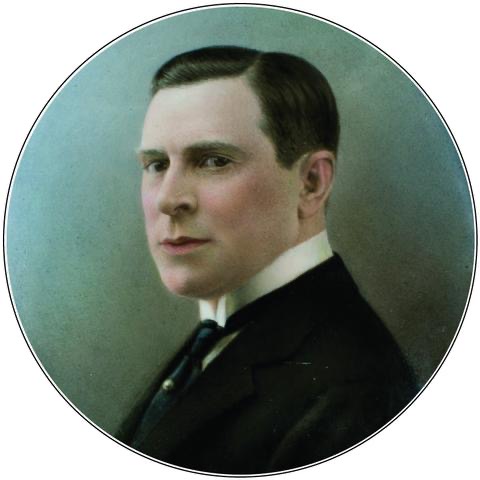FRANÇOIS COTY
A genius perfumer, the “father of modern perfumery”, the “Napoleon of perfumery” because of his connection to the Bonaparte family and the empire he built over the world…
Joseph Marie François Spoturno, known as François Coty, was born on the 3 May 1874 in Ajaccio.
In 1885, after his parents’ premature death, he leaves his native island for Marseille with his grandmother Anne-Marie Beloni. He takes up journalism then moves to the capital where he is greatly supported by Emmanuel Arène, family friend, Corsican republican deputy, journalist and playwright.
The 1900 Paris Exposition is the starting point of his vision of new perfumery. In the same year he marries Yvonne Alexandrine Le Baron, designer (1880-1966), grand-daughter of Alphée Dubois, medal engraver and Grand Prix de Rome winner. On the advice of a friend and pharmacist, he goes to Grasse to study the techniques and the art of perfumery with Georges Chiris. He learns about raw materials getting up at dawn to mingle with the May rose pickers, and also participates in distillery and extraction operations.
On his return to Paris in 1904, he creates his first perfume La Rose Jacqueminot from a small quantity of the precious rose absolute brought back from Grasse. Yvonne makes the delicate packaging. Emmanuel Arène advises him to take his mother’s name, Coti, which he modifies to embellish his signature. The success is immediate and spectacular. His creations mark a turning point in perfumery as he is the first to radically modify the floral bouquet’s traditional formulation by adding synthetic products. Fragrances become richer thanks to this touch of abstraction that transcends the identifiable components that are found in nature.
Between 1904 and 1906, he creates many masterpieces such as Ambre Antique, L’Origan, Jasmin de Corse. His industry develops with the help of his principal suppliers Georges Chiris and the Firmenich company. This new organic chemistry allows production at a lower cost. A visionary, François Coty henceforth realizes that perfume can become a mass market product.
In 1907, he opens a store Place Vendôme in Paris. Recognizing that attractive packaging has an affect on sales, he calls upon the talents of René Lalique to create the perfume bottles. Their first collaboration is the label for L’Effleurt in press molded glass on a Baccarat crystal bottle, representing the naiad, symbol of the Belle Epoque and Art Nouveau. Subsequently, René Lalique develops his activity by creating luxury perfume bottles. He will make around twenty for François Coty as well as labels, publicity plaques, signs, boxes and cases.
In 1908, François Coty founds La Cité des Parfums in Suresnes, both a production factory and a research laboratory. Eight years later, he relocates to the other side of the bridge at the Château de Longchamp, Paris XVI. In 1910, he opens a store on 5th Avenue in New York and entrusts René Lalique with the creation of the façade’s monumental glass windows. Three floors in height, the work, which can be admired in its entirety from the street, immediately gives the building a strong identity. In the heart of Manhattan, the “Coty Building” radiates the beauty and elegance of French savoir-faire.
During the 1920’s, Coty perfumes and perfumed lines are sold all over the world. The olfactory legacy is immense due to the exceptional accords of L’Origan and Chypre, considered masterpieces by Edmond Roudnitska and many other perfumer-creators who succeeded him. François Coty enables luxury to access the perfume market, and at the same time iniates its democratization. Considered as the father of Modern Perfumery, he remains the ultimate symbol of luxury “ à la française”.
In 1925, the Coty Inc. founded in 1922, becomes a publicly traded company and is one of the most powerful and wealthiest manufacturers in the world.
By the early 1930’s, weakened by the world’s financial crisis, his divorce and his political activities, François Coty is on the verge of financial ruin. True to his taste for prestigious buildings and 18th century architecture, he nevertheless purchases the Countess du Barry’s music Pavilion at Louveciennes.
Today the perfumery is a market constantly in search of wonder.

